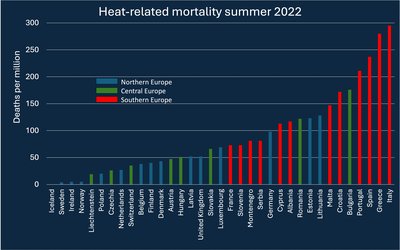
Heat stress means that our body has difficulty in cooling itself during periods of exertion, or in extreme cases even while the body is at rest. Heat stress increases when rising temperatures reduce the difference between outside and body temperature. But it’s not just temperature that determines heat stress. Also air humidity is very important: a higher humidity makes temperature feel hotter than it actually is. In addition, for heat stress outdoors, the amount of direct sunlight and wind speed are important. In addition, local influences caused by humans such as urban heat island effects, black pavement, or other land surface modifications add to heat stress.
Indoors, heat stress can be quantified from a combination of temperature and humidity effects. This has been done on a global scale for mean monthly values of temperature and humidity over the period 1973 – 2012. The results indicate that heat stress has increased since 1973 over many land regions, consistent with and primarily driven by the increase in surface air temperature. A further increase of heat stress during this century is projected.
Source: Knutson and Ploshay, 2016. Climatic Change 138: 25–39
Photo: Jorge Quinteros (www.flickr.com)








